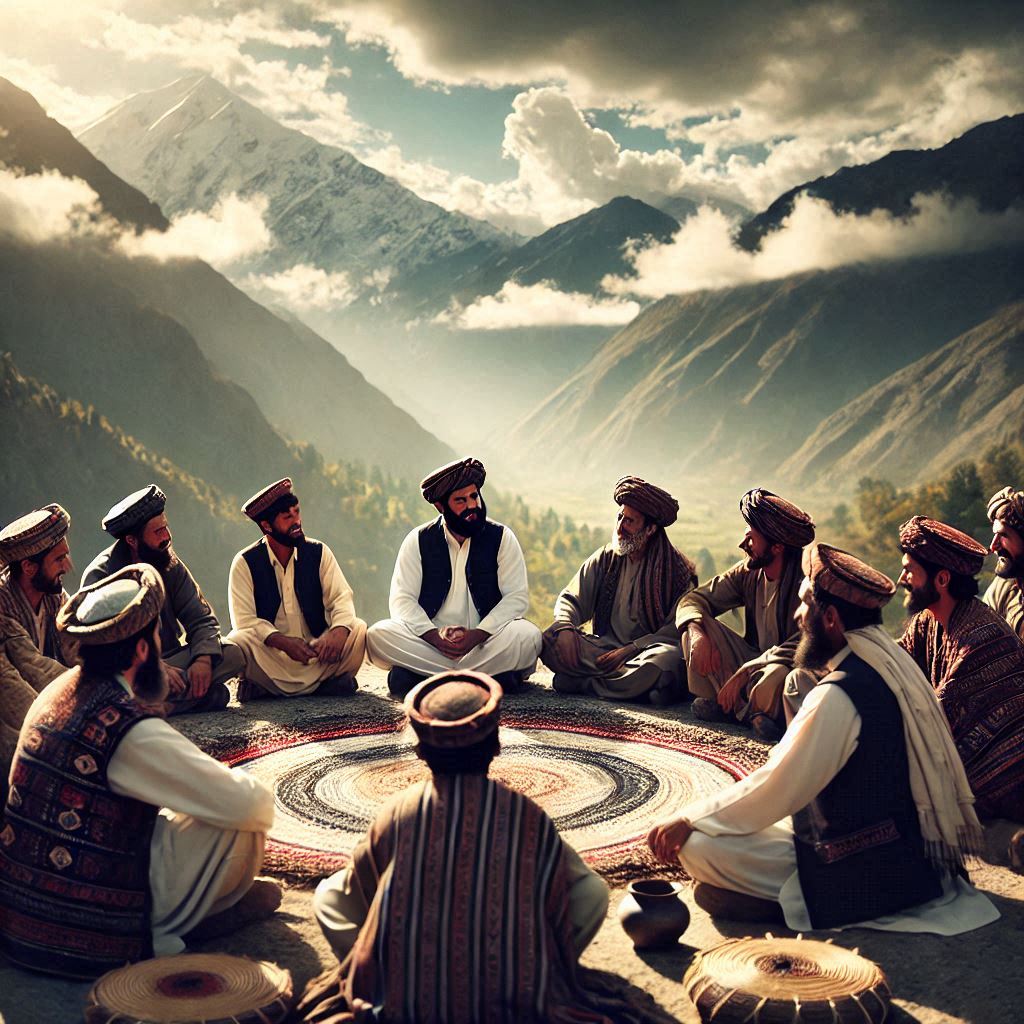- Empty cart.
- Continue Shopping
The Lost Tribe of Pashtoon: Echoes of an Ancient Mystery

It was during one of my journeys through the rugged, awe-inspiring Hindu Kush mountains that I first heard whispers of a tale so enigmatic, that it felt like stepping into a forgotten legend. The locals, with their weathered faces and warm hospitality, spoke of a tribe—once part of the Pashtoon community—that had vanished without a trace. Intrigued, I found myself drawn into their stories, uncovering fragments of a mystery that continues to echo through time.

Hindukush Mountain Range
A Tale Passed Down Through Generations
Sitting by the fire in a small village nestled in the mountains, an elder shared with me the story of this lost tribe. “They were not ordinary people,” he began, his voice steady yet filled with reverence. “Their origins were tied to something ancient, perhaps even divine.”
Some believed they descended from the lost tribes of Israel, their lineage stretching back to the days of King Solomon. Others spoke of their unmatched honor and loyalty, qualities that made them legendary among the Pashtoons. What truly set them apart, however, was their connection to a mysterious artifact: the “Heart of the Mountains,” a luminous gem said to hold wisdom and protect its bearers.
A Legacy Written in Stars and Stone
I couldn’t help but marvel at the stories of this gem. The elder’s words painted vivid pictures of a tribe guided by celestial knowledge, carving symbols of constellations and gateways to other realms into the mountainside. As he spoke, I imagined them under starlit skies, their chants mingling with the howling wind, their eyes fixed on a destiny that lay beyond the mortal plane.
But then came the most haunting part of the tale. One moonless night, the tribe disappeared. “Gone,” the elder whispered, his voice tinged with sadness. “Not a single trace, except for their carvings and tapestries.”

Seeking the Lost
Determined to learn more, I ventured into nearby caves the following day. What I saw left me breathless: ancient carvings of stars and symbols that felt eerily familiar, as though they held secrets that transcended time. I traced the patterns with my fingers, imagining the hands that created them, and wondered if this tribe had discovered something that our modern minds have yet to comprehend.
Whispers of the Past in Pashtoon Traditions
As I traveled further, I began to notice echoes of the lost tribe in the everyday lives of the Pashtoons. Their language, Pashto, carried certain phrases that seemed almost ancient in their cadence. Their Pashtunwali code of life—honor, hospitality, and courage—felt like a living testament to the values of this enigmatic tribe.
A Magical Legacy
In the evenings, as the mountains turned golden under the setting sun, I sat with children who gathered around their elders to hear these stories. They listened with wide-eyed wonder, just as I did, to tales of celestial journeys and the whispers of their ancestors in the wind. “When the wind howls,” a child told me with innocent conviction, “it’s them. The lost tribe is still singing.”
My Connection to Their Mystery
There was something deeply personal about this experience. As I walked through the breathtaking landscapes of the Hindu Kush, it felt as though the mountains themselves were alive, sharing secrets with those willing to listen. The wind that brushed past my face carried more than just the chill of the altitude—it carried whispers of the past, of a tribe that might still exist somewhere, beyond our understanding.
A Journey Without End
Even now, as I sit and write this, I can’t shake the feeling that the lost tribe of Pashtoon is more than just a legend. They are a symbol of our connection to the mysteries of the universe, a reminder that some stories are meant to be lived, not just told.
So, if you ever find yourself in the Hindu Kush, pause for a moment. Listen to the wind, touch the stones, and let the whispers guide you. Perhaps, like me, you’ll feel the presence of a tribe whose legacy is written not just in the stars, but in the soul of every Pashtoon who walks these ancient lands.



